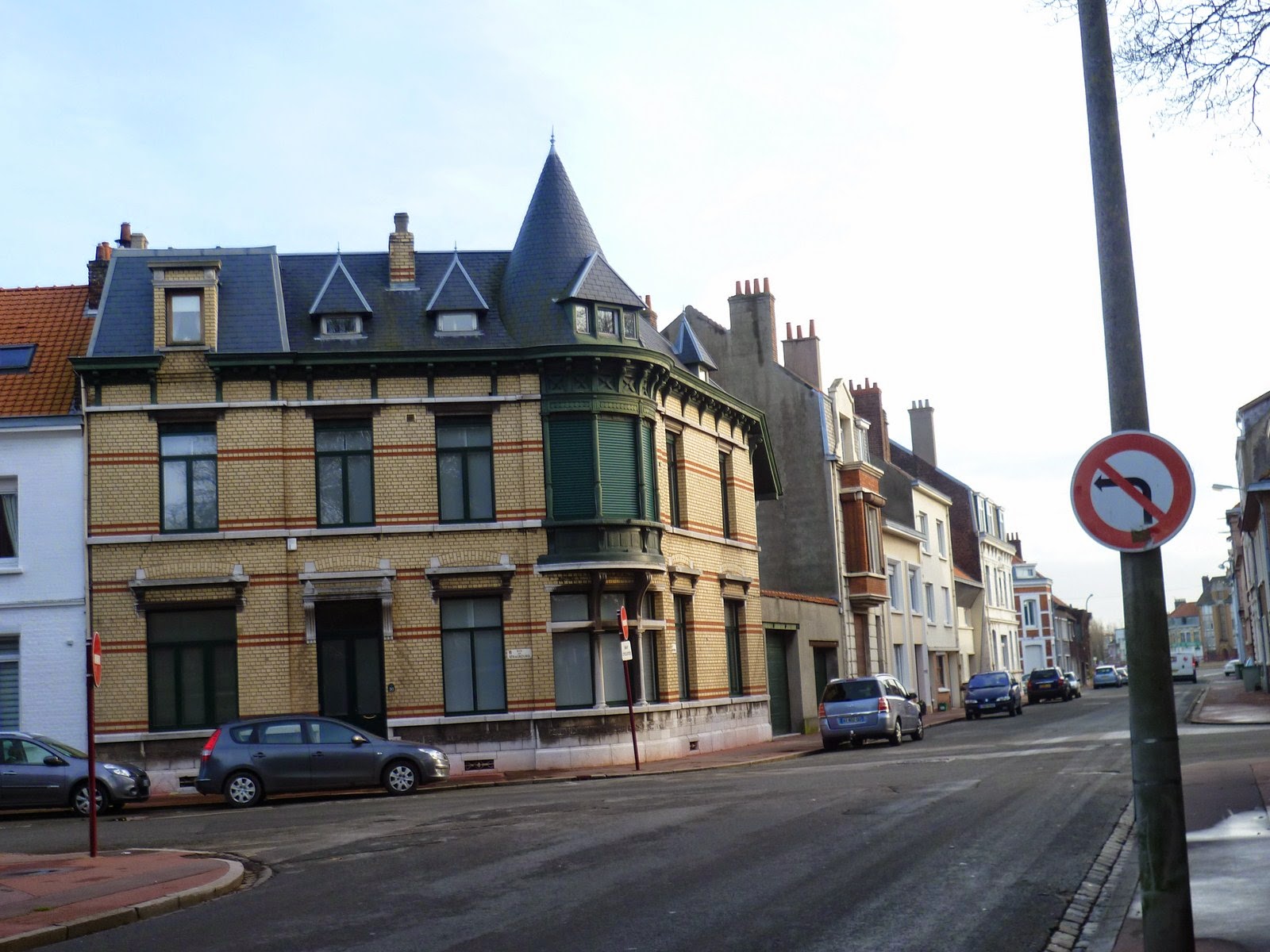Calais es la ciudad costera francesa más
próxima a Inglaterra. Está en el Departamento Pas-de-Calais de la Región
Nord-Pas-de-Calais. Dover se encuentra a tan solo 34 km y en días claros de
pueden ver sus acantilados blancos. Calais es límite entre el Canal de la
Mancha y el Mar del Norte. Calais se fundó como puerto pesquero poco antes del
siglo X, pero pronto adquirió relevancia militar. Eduardo III de Inglaterra
toma la ciudad en 1347, tras once meses de asedio. Eduardo III, muy contrariado
por el largo asedio, sustituyó a muchos habitantes de la ciudad por ingleses.
Por esta condición de ciudad inglesa, enviaba miembros al Parlamento de Londres
desde 1372. La ciudad fue conocida como la joya de la corona inglesa, y los
aranceles recaudados allegan un tercio del gasto del gobierno inglés. Estaño,
plomo, textiles y lanas eran las materias primas más mercadeadas en el lugar. Calais
quedó por muchos años como ciudad inglesa, y así rezaba uno de los dichos: Sólo
entonces ganarán Calais los franceses, cuando el hierro y el plomo floten como
el corcho. La realidad era muy distinta, y solo la rivalidad entre Francia y el
Ducado de Borgoña permitieron a los ingleses mantener la posición. Pero en
cuanto Francia se hizo con el Ducado de Borgoña, Calais cayó en manos francesas
como fruta madura. El final llegó el 7 de enero de 1558 cuando Francisco de
Guisa tomó la ciudad y la región, a la que se llamó zona reconquistada. Los
españoles tomaron la ciudad desde Flandes en 1596, pero la devolvieron en 1598
por el tratado de Vervins. Durante el siglo XVIII Calais adquirió fama
científica, pues el primer metro que se definió se basaba en la distancia entre
Calais y Perpiñán, que viene a ser la máxima distancia entre el norte y el sur
de Francia. Calais volvió a ser relevante militarmente en las guerras
napoleónicas, al servir de base al ejército de invasión de Napoleón en 1805.
Calais tomó importancia de nuevo durante la Primera Guerra Mundial como puerto
de llegada de tropas británicas y de suministros. En la segunda, la ciudad
colaboró en el reembarco de Dunquerke de tropas británicas y francesas hacia el Reino Unido. También fue
cuartel general nazi durante toda la guerra de la zona norte de Francia, y
desde allí bombardeaban el sur de Inglaterra con cañones emplazados sobre vías
ferroviarias y también lanzaron las bombas volantes V1. Calais es el primer
puerto de pasajeros de Francia y el cuarto puerto comercial. Los barcos tardan
unos 75 minutos en efectuar el recorrido. Calais fabrica corbatas, industria
química, cable submarino de fibra óptica, fabricación de papel, bordados de
alta costura. Calais también tiene mega centros comerciales para alcohol, dada
la diferencia de impuestos entre Francia e Inglaterra.
Calais is the closest to England French coastal
town. It is in the Pas-de-Calais department in the Nord-Pas-de-Calais region.
Dover is located only 34 km and on clear days you can see its white cliffs.
Calais is the border between the English Channel and the North Sea. Calais was
founded as a fishing port shortly before the tenth century, but soon acquired
military significance. Edward III of England took the city in 1347, after
eleven months of siege. Edward III, very annoyed by the long siege, replaced many
city dwellers by English. For this condition of English town, the city sent
members of Parliament in London since 1372. The city was known as the jewel in
the British crown, and tariffs levied reach one third of English government
spending. Tin, lead, wool textiles and raw materials were the most traded in
place. Calais was for many years an English town, so read one of these: “Then shall
the Frenchmen Calais win, when iron and lead like cork shall swim”. The reality
was very different, and only the rivalry between France and the Duchy of
Burgundy enabled the British to maintain the position. But as France took the
Duchy of Burgundy, Calais fell into French hands like a fruit. The end came on
January 7, 1558 when Francisco de Guise took the city and the region, which was
called reconquered area. The Spaniards took the city from Flanders in 1596, but
returned it in 1598 by the Treaty of Vervins. During the eighteenth century
Calais acquired scientific fame, for the first meter was defined based on the
distance between Calais and Perpignan, which is to be the maximum distance
between the north and the south of France. Calais again be militarily relevant
in the Napoleonic wars, to provide a basis for invading army of Napoleon in
1805. Calais became important again during World War I as a port of arrival of
British troops and supplies. In WWII, the city worked on the Transferring of
Dunkirk of British and French troops to the UK. It was Nazi headquarters of
northern France during the war, and from there they bombarded southern England
with guns emplaced on railways and also launched the V1 flying bombs. Calais is
the first passenger port of France and the fourth largest trading port. The
boats take about 75 minutes to complete the round. Calais manufactures ties,
chemical industry, cable submarine of fiber optic, papermaking, embroidered
couture. Calais also has mega malls to sell alcohol, given the tax differential
between France and England.




















































